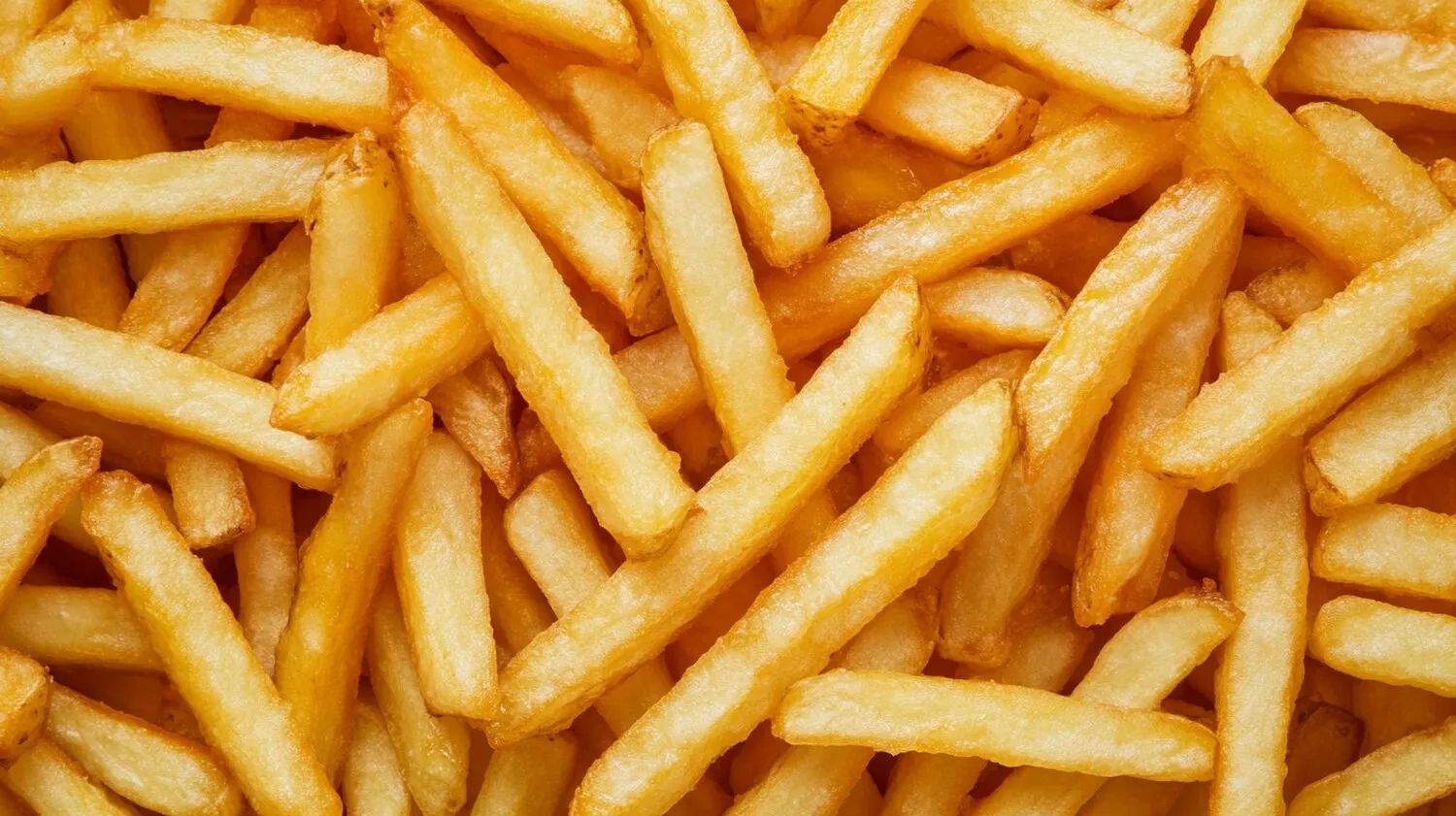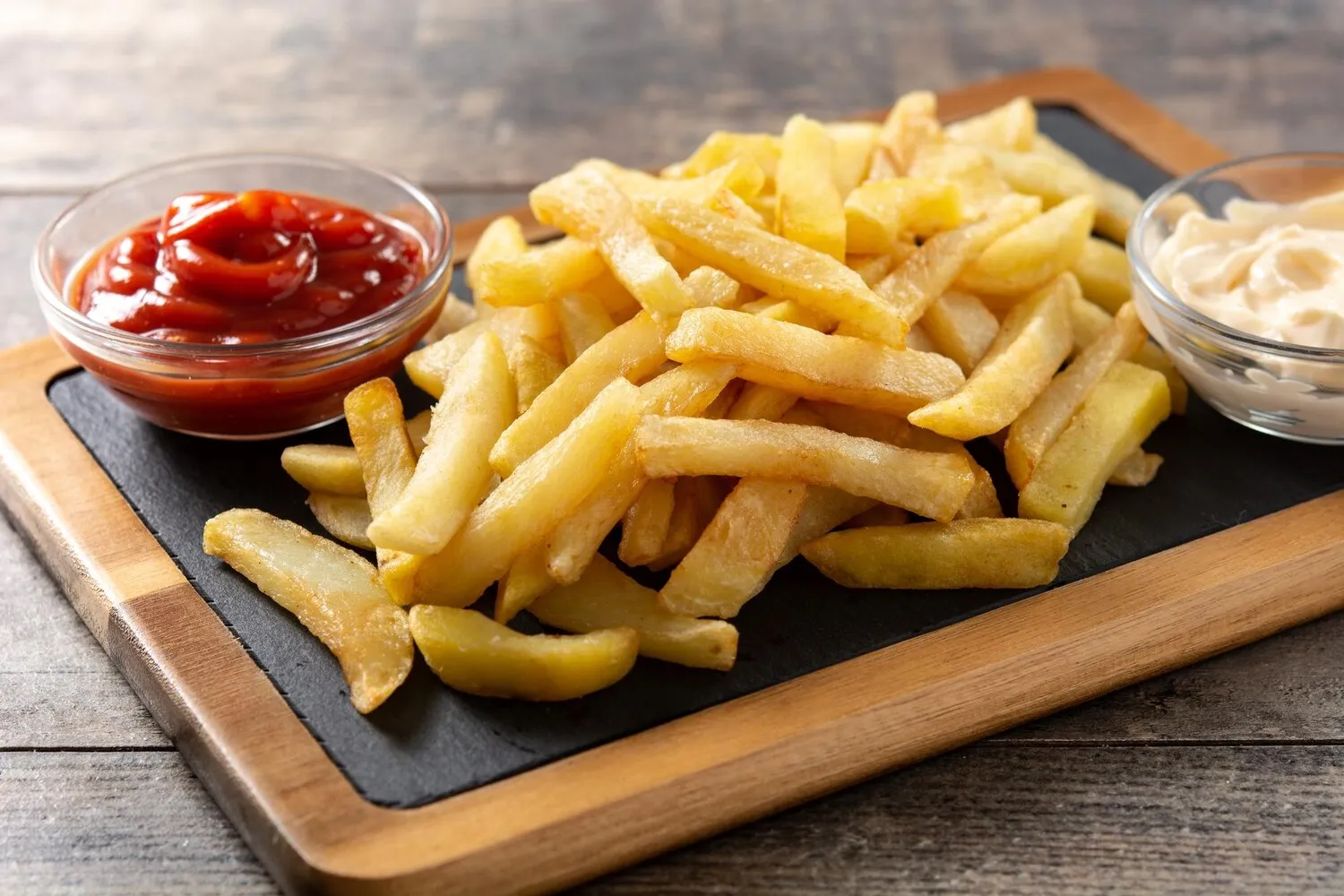
Macaxeira Frita
Fried cassava, a popular side dish in Northeastern Brazil.
Nutrition Facts
* The % Daily Value (DV) tells you how much a nutrient in a serving of food contributes to a daily diet. 2,000 calories a day is used for general nutrition advice.
Restaurante Sadoche
Cassava, also known as mandioca or yuca in different regions, has been a staple food in Brazil for centuries, predating the arrival of Europeans. Indigenous populations cultivated and utilized cassava in various ways, including frying. The process of frying cassava likely evolved as a practical method for preservation and enhancing its flavor, becoming a common culinary practice over time.
Macaxeira Frita is deeply ingrained in Brazilian food culture, particularly in the Northeast, where it's a common accompaniment to various meals, a popular street food, and a cherished snack. It represents a connection to the land and the history of indigenous foodways.
Street Food Staple
Macaxeira Frita is widely available from street vendors and food stalls throughout Northeastern Brazil. It's a quick, affordable, and satisfying snack enjoyed by people from all walks of life.
Restaurant Side Dish
In restaurants, it often serves as a side dish alongside grilled meats, seafood, and other traditional Brazilian dishes, providing a starchy counterpoint to richer flavors.
Home Cooking Comfort Food
Macaxeira Frita is also frequently prepared at home, often as part of a larger family meal or as a simple and comforting snack.
Regional Variations
While the basic concept remains the same, regional variations may exist in terms of preparation, seasoning, and accompanying sauces. For example, some areas might prefer a thicker cut, while others might prefer a thinner, crispier version.
Macaxeira Frita boasts a simple yet satisfying flavor profile characterized by its starchy, slightly sweet base and crispy, golden exterior. The flavors are enhanced by the oil used for frying and often complemented by salt.
The dominant flavor is that of the cassava itself – a mild, earthy sweetness. Frying transforms the texture, creating a contrast between the soft interior and the crunchy exterior. Salt is typically added to bring out the natural flavors and provide a savory balance. The oil used for frying imparts its own subtle flavor notes, contributing to the overall taste experience. Some variations might include garlic or other seasonings.
Choosing the Right Cassava
Select firm, unblemished cassava roots. Fresh cassava is essential for the best flavor and texture. Avoid cassava that is soft, discolored, or has a strong odor.
Proper Preparation
Peel the cassava thoroughly and remove any fibrous core. Cut the cassava into uniform pieces to ensure even cooking.
Double Frying Technique
Consider double frying the cassava for extra crispiness. The first fry at a lower temperature partially cooks the cassava, while the second fry at a higher temperature creates a golden-brown, crispy exterior.
Oil Temperature
Maintain the correct oil temperature during frying (around 350°F or 175°C). Too low, and the cassava will be greasy; too high, and it will burn before it's cooked through.
Drain Thoroughly
After frying, drain the macaxeira frita on paper towels to remove excess oil. This will help maintain its crispness.
Salt Immediately
Salt the macaxeira frita immediately after removing it from the oil. This allows the salt to adhere properly and enhance the flavor.
Explore additional Side Dish dishes and restaurants
Explore Side DishDiscover top dining spots and culinary experiences in Natal.
Explore NatalLearn more about the food culture, restaurant scene, and culinary heritage of Brazil.
Explore Brazil
